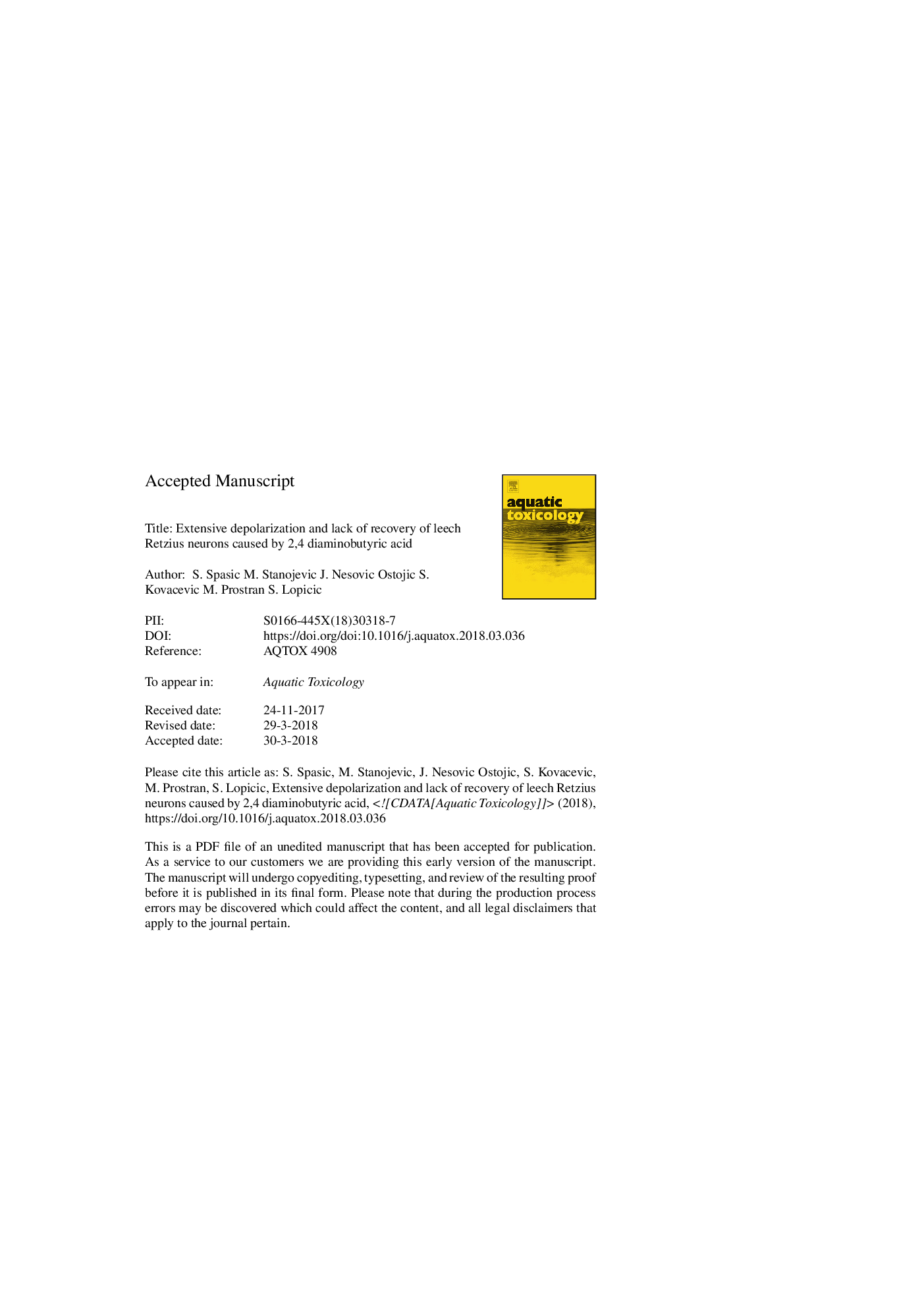| Article ID | Journal | Published Year | Pages | File Type |
|---|---|---|---|---|
| 8883761 | Aquatic Toxicology | 2018 | 11 Pages |
Abstract
In this paper we present, for the first time, a detailed account of electrophysiological effects of 2,4-diaminobutyric acid (2,4-DABA). 2,4-DABA is a neurotoxic non-protein amino acid produced by Cyanobacteria with a possible link to neurodegenerative disorders in animals and humans. Intracellular recordings were performed on Retzius nerve cells of the leech Haemopis sanguisuga using glass microelectrodes filled with 3â¯mol/L KCl. Our results show that 2,4-DABA is an excitatory amino acid, causing membrane depolarization in a concentration-dependent manner. The most prominent depolarizations of 39.63±2.22â¯mV and 47.05±4.33â¯mV, induced by 5Ã10â3 and 10â2â¯mol/L 2,4-DABA respectively, are several times larger than maximal depolarizations induced by either Glutamate, Aspartate, β-N-methylamino-alanine (BMAA) or β-N-oxalylamino-alanine (BOAA) on our model. These 2,4-DABA induced depolarizations evolve through two distinct stages, which is a novel phenomenon in electrical cell activity upon application of an excitatory amino acid, at least on our model. Involvement of two separate mechanisms, suggested by the two stage phenomenon, is discussed in the paper. We also provide evidence that 2,4-DABA induces irreversible functional disturbances in neurons in a concentration-dependent manner, since only half of the cells recovered normal electrical activity after application of 5Ã10â3â¯mol/L 2,4-DABA, and none recovered after application of 10â2â¯mol/L 2,4-DABA. Effects of both L-2,4-DABA and DL-2,4-DABA were tested and are not significantly different.
Related Topics
Life Sciences
Agricultural and Biological Sciences
Aquatic Science
Authors
S. Spasic, M. Stanojevic, J. Nesovic Ostojic, S. Kovacevic, M. Prostran, S. Lopicic,
